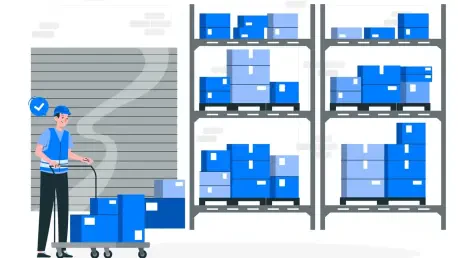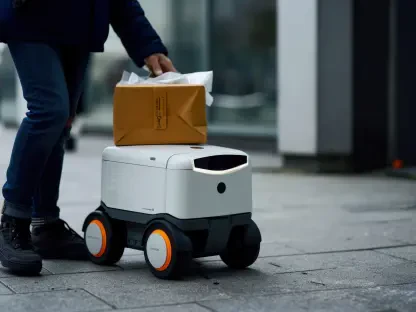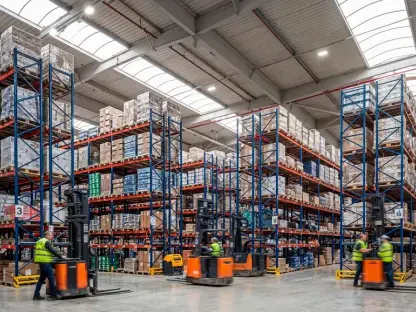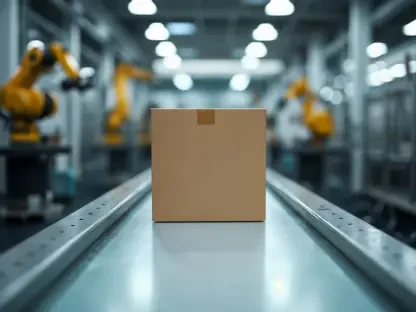Rohit Laila, with decades of experience in logistics and a passion for technology and innovation, shares valuable insights into enhancing labeling efficiency in warehouses.
Can you explain why operational efficiency is so crucial in today’s warehousing and logistics landscape?
In today’s world, the logistics industry moves incredibly fast. Operational efficiency is key because every minute matters in this competitive environment. Efficient operations enable companies to fulfill orders swiftly, reduce costs, and improve overall service quality, which is essential to stay ahead of the competition.
How significant is the role of labeling in maintaining overall warehouse efficiency?
Labeling might seem like a minor detail, but it plays a vital role. Accurate and efficient labeling helps prevent delivery mix-ups, minimizes returns, and reduces the time workers spend correcting mistakes or walking between stations. It’s the backbone of a smooth operation in the warehouse.
What are some common problems that arise from inefficient labeling practices?
Inefficient labeling can lead to numerous issues, such as mislabeling, which causes delivery errors, increased returns, and significant time spent rectifying mistakes. These problems can disrupt workflow and significantly impact productivity and customer satisfaction.
How much can inefficient labeling cost a business annually, both in terms of money and productivity loss?
Inefficient labeling can cost a business up to £6,000 and 347 working hours per operator annually. Beyond the financial aspect, the time it takes to refocus after each interruption, estimated to be around 23 minutes, adds up quickly, particularly in busy operations.
Could you tell us about the tool Brother UK has developed to help businesses with their labeling processes?
Brother UK developed a five-minute labeling self-assessment tool. This tool helps warehouse and logistics firms identify areas where time and money are slipping away. It offers tailored advice to improve efficiency and address these challenges effectively.
How does the labeling self-assessment tool work, and what insights does it provide for businesses?
The self-assessment tool categorizes businesses into four stages: Just Getting Started, Almost Optimized, Exploring Efficiency, or Labeling Expert. This helps companies understand their current efficiency level and provides specific recommendations to improve their labeling processes.
What are the four categories that businesses can be classified into by the labeling self-assessment tool?
The four categories are Just Getting Started, Almost Optimized, Exploring Efficiency, and Labeling Expert. These stages help businesses understand their current position and the steps needed to enhance their labeling efficiency.
What advice does Brother UK provide for businesses categorized as “Just Getting Started” with their labeling processes?
For businesses that are just beginning, Brother UK advises starting with a labeling process audit. This involves mapping the existing workflow, assessing equipment setups, and identifying bottlenecks that hinder operations. It’s a fundamental step to understand the current state and plan improvements.
Why is a labeling process audit important for companies that are just beginning to optimize their labeling operations?
A labeling process audit is crucial as it helps pinpoint inefficiencies and bottlenecks in the current setup. By understanding these issues, businesses can take targeted actions to streamline their workflow, optimize equipment placement, and ultimately enhance overall efficiency.
How can businesses in the “Almost Optimized” and “Exploring Efficiency” stages address common issues like hardware downtime and mislabeling?
To address these issues, businesses should evaluate their print station distribution, and consider mobile printing solutions such as on-body mobile printers or forklift-mounted printers. These solutions allow labels to be printed at the point of need, reducing delays and errors, and minimizing hardware downtime.
What are some practical solutions for reducing delays and errors in the labeling process?
Introducing mobile printing solutions, optimizing hardware placement, and ensuring there are enough print stations can significantly reduce delays and errors. Mobile workstations and on-site printing reduce the need for workers to walk between stations, which minimizes the chances for mistakes and saves time.
Can you describe how mobile printing solutions like on-body mobile printers or forklift-mounted printers can improve warehouse efficiency?
Mobile printing solutions enable workers to print labels right where they’re needed, whether that’s on the warehouse floor or mounted on a forklift. This reduces the distance workers must travel, saving time and reducing the chance of errors or delays associated with moving back and forth to stationary printers.
What steps should businesses take to move from being “Almost Optimized” to achieving high-level efficiency in their labeling processes?
To move towards high-level efficiency, businesses should adopt advanced data monitoring, stay updated with industry trends, and prepare for potential downtimes. Consulting with labeling experts can also provide tailored solutions that align with their specific goals and operational needs.
How can advanced data monitoring and staying current with industry trends benefit labeling operations?
Advanced data monitoring helps track performance in real-time, allowing businesses to identify and address inefficiencies quickly. Staying current with industry trends ensures that companies adopt the latest technologies and best practices, which can enhance labeling accuracy and operational efficiency.
What kind of expert advice should businesses seek to optimize their labeling processes further?
Businesses should seek advice on best-in-class labeling products and solutions tailored to their unique needs. Experts can recommend the latest technologies, help with the implementation process, and provide ongoing support to ensure consistent labeling performance.
Can you tell us more about Brother’s RJ mobile print range and its advantages for warehouse operations?
Brother’s RJ mobile print range offers flexibility and efficiency by allowing on-site printing. These printers can be mounted on forklifts, reducing the need for workers to walk back and forth to stationary printers. This optimization speeds up tasks such as picking, packing, and delivering products, leading to significant cost savings.
What are the key features of the updated TD-2D and TD-4D range of professional desktop label printers?
The TD-2D and TD-4D range includes features like compatibility with accessories such as tablet holders, creating end-to-end solutions that improve workflow efficiencies. These compact devices are ideal for crowded packing benches, supporting on-the-go operations with options like battery packs and carry handles.
How do compact mobile devices improve productivity and cost-efficiency in crowded packing areas?
Compact mobile devices optimize space and improve workflow efficiency by enabling seamless integration into existing setups. Their portability allows workers to print labels on the go, reducing congestion and streamlining operations in busy packing areas.
What makes Brother’s TJ industrial printer range suitable for high-volume labeling requirements?
The TJ industrial printer range is designed for endurance and reliability, making it ideal for high-volume labeling. Its market-leading 5-year warranty ensures long-term support and peace of mind for businesses, making it a dependable choice for demanding labeling tasks.
Why is Brother UK’s market-leading 5-year warranty on the TJ industrial printer range significant for businesses?
The 5-year warranty provides businesses with long-term reliability and support, ensuring that their investment in labeling technology remains protected. This leads to reduced downtime and maintenance costs, allowing companies to focus on their core operations.
How does Brother UK’s dedicated team of experts support businesses in investing in the right labeling technology?
Brother UK’s team offers tailored advice, helping businesses choose the best labeling solutions for their specific needs. They provide support throughout the implementation process and offer ongoing assistance to ensure optimal performance and efficiency.
What should businesses expect to discover by taking Brother UK’s five-minute labeling assessment?
By taking the five-minute labeling assessment, businesses can identify inefficiencies in their labeling processes and receive personalized recommendations. This assessment helps them understand where time and money are being lost and provides actionable steps to enhance their operations.
Do you have any advice for our readers?
My advice would be to continually evaluate and optimize your labeling processes. Stay informed about new technologies and trends, and don’t hesitate to seek expert advice to ensure you’re using the best solutions for your specific needs. Investing in efficient labeling practices can lead to significant time and cost savings, ultimately enhancing overall productivity and customer satisfaction.









